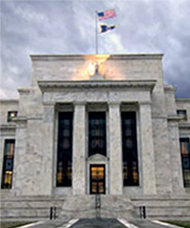The new Senior Credit Officer Opinion Survey (SCOOS), produced quarterly by the Federal Reserve, was just released. There were a couple things that deserved some investigation.
Non-agency RMBS appear to be making a come back in the financing world. Is this a grab for yield? The more interesting part of the question was about financing term. There is a shift toward longer term financing (e.g. past 30 days). Now this could be driven by LCR considerations (and come from the dealer side of the equation) or customers could be trying to avoid funding that can be yanked away.
“…About one-third of dealers reported an increase in demand for funding of non-agency RMBS, and about one-fifth noted increased demand for funding of CMBS. Almost one-third of respondents noted increased demand for term funding – that is, funding with a maturity greater than 30 days – for non-agency RMBS collateral. For most other collateral types covered by the survey, respondents indicated that demand for funding and term funding remained basically unchanged…”
Some of the special questions focused on how positions have changed vis-à-vis increased or decreased interest rate volatility. There looks to be a decrease in exposure to rate volatility, although modestly more of a decrease in the short end than long.
“…A net fraction of roughly one-fourth of dealers indicated that hedge fund clients have decreased positions that would benefit from rising volatility of short-term interest rates since the beginning of the year. Over the same period, a net fraction of about one-fifth of respondents reported that hedge funds have decreased positions that would benefit from rising volatility of long-term interest rates. Taken together, these responses suggest that hedge funds have reduced positions predicated on rising interest rate volatility across the term structure since the beginning of the year…”
Liquid alternative funds were also the subject of special questions. The report defined liquid alternative funds as “organized as traditional open-ended mutual funds and regulated as such under provisions of the Investment Company Act of 1940, offer investment strategies that in some respects, notably in the use of leverage and short positions, resemble those offered by hedge funds.”
These funds have been growing.
“…More than one-half of the respondents indicated that the overall volume of AUM has increased over the past year for liquid alternative funds that focus on equity strategies. In addition, about one-fourth of dealers reported that the AUM for liquid alternative funds offering macro-oriented strategies and credit-oriented strategies have increased…”
Leverage has been increasing too.
“…With respect to leverage, one-fourth of respondents, on net, indicated that liquid alternative funds focusing on equity long-short strategies and credit-oriented strategies have increased their use of financial leverage over the past year. A couple of dealers, on net, also noted an increase in the use of financial leverage by funds focusing on equity event-driven strategies. In contrast, a couple of dealers reported that liquid alternative funds focusing on macro-oriented strategies had reduced their use of financial leverage over the past year…”
This increased long-short and credit-oriented activity should flow down into increased securities lending activity and perhaps corporate bond repo. On the other hand, a fall off in macro-oriented strategies might dampen demand for sovereign paper.


